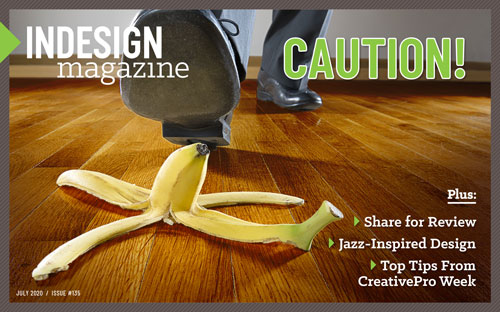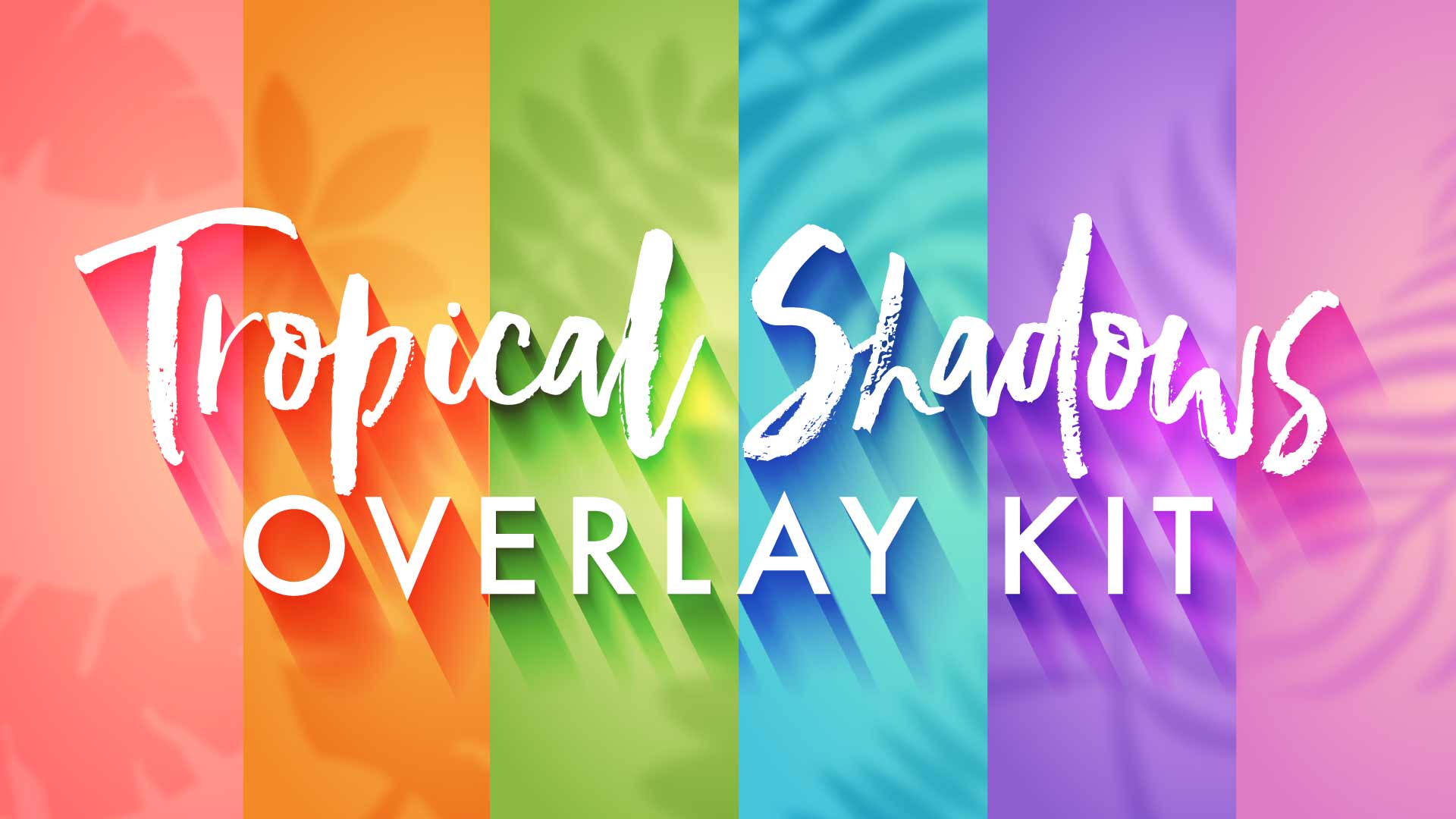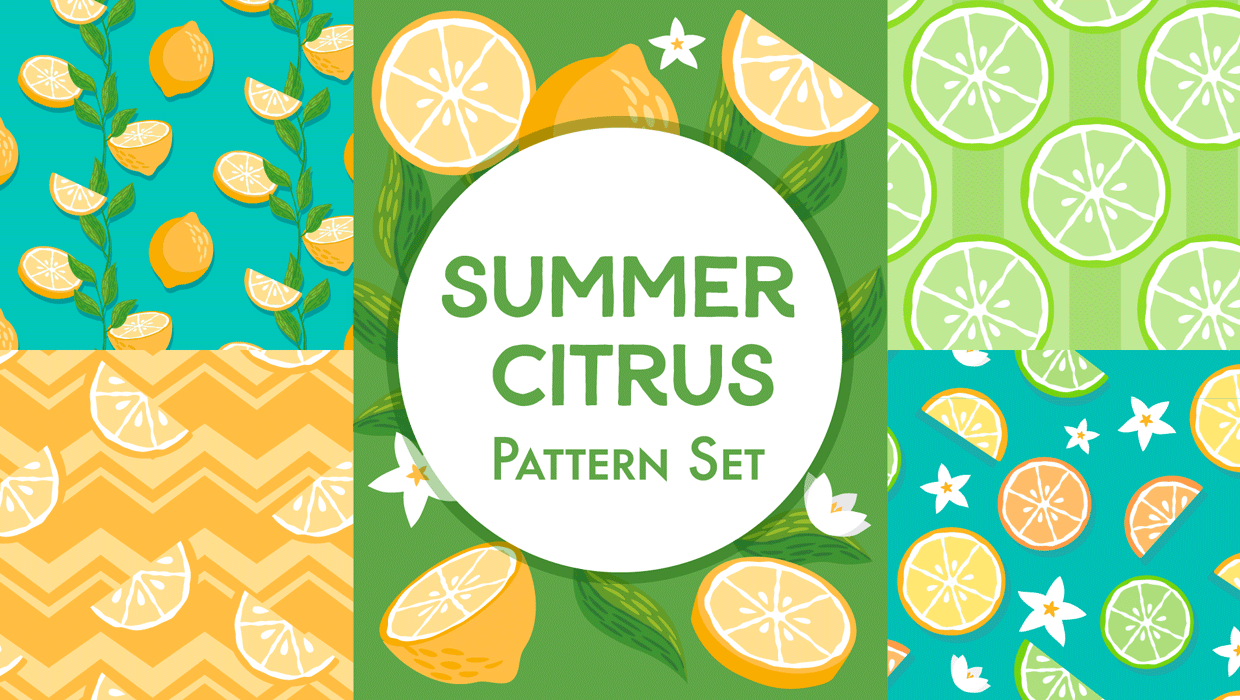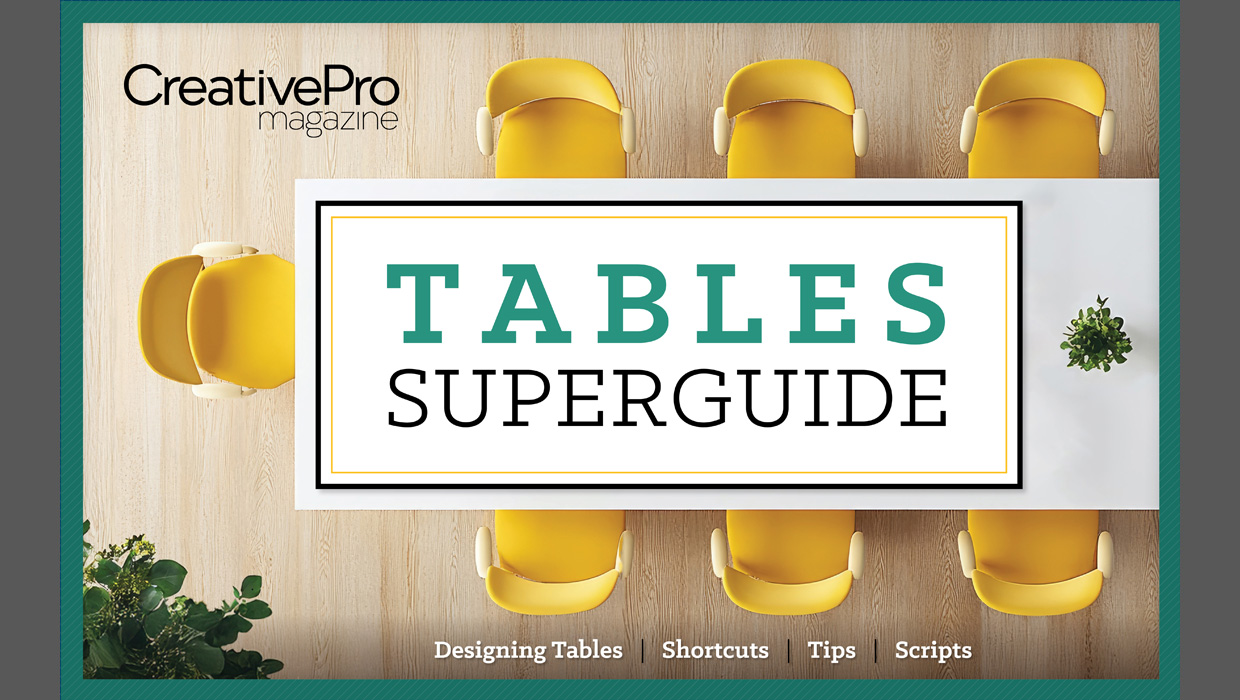Creating Jazz-Inspired Design Styles

This article appears in Issue 135 of InDesign Magazine.
 This article appeared in Issue 135 of InDesign Magazine.
This article appeared in Issue 135 of InDesign Magazine.“Never play the same thing twice.” This quotable quote is attributed to Louis Armstrong, the great jazz singer and musician. It captures that indefinable essence of jazz—the spontaneity and freedom of unique expression. But it also suggests that all of us can challenge ourselves to ongoing learning and exploration. Whenever you’re in a design rut, instead of following a trend, try something different. History is rich with inspiration, and the jazz scene particularly offers a vibrant source of quirky, off-beat design ideas. Here are some examples for jazz-inspired design, with tips on techniques to create them. In fact, “Take Five!”
Go to Extremes with Type
Jazz is all about bending (or ignoring) the rules, and you’ll see this in the typography of jazz-style designs. These chocolate bar wrappers feature typography that isn’t afraid to stand out and make a statement (Figure 1).

Figure 1. Chocolate bar packaging with dramatic typography
Bold changes in type weight, scale, and style make this branding highly distinctive, with the layered effect adding a sense of movement and dimension. This is also seen in the layered swirl fill of the wordmark, which is created by outlining text kerned tightly (Type > Create Outlines), ungrouping the outlines (Object > Ungroup), creating a compound path of the two lines of text (Object > Paths > Make Compound Path), and finally pasting in a tilted letter (“h,” in this case, after the name of the brand). A thin ribbon of text runs across both areas of the label, unifying them while functionally serving to list ingredients. A variety of colorization
transparency effects (Screen, Multiple, Overlay, and so on, which can be found in the Effects panel using Window > Effects), are applied to the portion of the label stating the cacao percentage in the bar.
Add Pops of Color
Jazz design can be saturated with color, or you can use it sparingly as an accent, like in this branding for a coffee shop (Figure 2).

Figure 2. Branded collateral for a coffee shop with strategic pops of color
Here, shapes drawn with the Pen tool are placed on a layer behind the text counters (the open spaces of the letters “o” and “e”) to add some pops of color. The brand’s graphic motif of a circle and square (which suggests a coffee cup or a person sitting at a café table in a corner) can be used like a stamp on top of black-and-white imagery, such as in the postcard on the right. Inspired by spots of color often found overlaying black-and-white images on jazz album covers, this spotlights the focal point in the photo while adding a touch of branding.
Get Scrappy
Torn paper is another design element common to jazz graphics. This packaging for a cookie mix uses torn paper to create a collage-like, makeshift effect (Figure 3).

Figure 3. Cookie mix packaging with ripped paper effects and playful text
Or, a single piece of torn paper can be a design’s focal point. Pull imagery from stock photo sites, scan your own torn paper, or learn how to make a ripped effect in InDesign (here’s a tutorial by InDesign Magazine Editor-in-Chief, Mike Rankin). The brand name is set at a tilt with the baseline of individual letters shifted up and down to create a playful, jumbled look, well-suited for the subject of a baking mix. Line drawings, especially those juxtaposed with solid forms, are another common element of jazz graphics; scan in art or draw with a tablet and arrange them with shapes drawn with the Pen tool.
Build a Rhythm
Building rhythm into your design can create a sense of drama, tension, and fun. One way to do so is by repeating an element, such as the horizontal and vertical arrangement of photos on this booklet and brochure for a dance studio (Figure 4).

Figure 4. Dance studio’s booklet cover and brochure cover with repeated photographic elements and color overlays
This is also a useful technique when photography resources are limited. In the booklet (left), the third photo is emphasized by a closer zoom and an overlay of color. This is a subtle mirroring of the wordmark, which uses scale to emphasize the third element in its sequence, a typical countdown for a dance rehearsal. The brochure (right) uses black to emphasize the third element, while colors overlaid on other photos serve to set a theme. To create precise color overlays, simply copy the frame and paste it exactly over the photo (Edit > Paste in Place), fill the frame with a solid color, and select your preferred colorization effect from the Effects panel (Window > Effects).
Stack Type
Stacked, tightly kerned type creates a strong, energetic look. This series of book covers stacks type in a variety of ways while looking cohesively like a set (Figure 5).

Figure 5. Set of books with a variety of stacked type effects
The leftmost example shows the title text stacked loosely and separately from the authors’ names, with gradient effects to create an illusion of fog and invisibility. The middle example shows all pieces of text stacked together tightly. The rightmost example similarly shows the text stacked together, but emphasizes certain words with scale and color and tilts the entire block. All caps are easier to stack because they lack ascenders and descenders, but lowercase text can also be stacked to create powerful results.
“So What?”
Jazz album covers, musical posters, and other paraphernalia are bursting with ideas you can remix and recycle. Borrow ideas and improvise! (Remember: “Never play the same thing twice.”) And have fun—find your creative rhythm and put your heart into it! After all… it don’t mean a thing, if it ain’t got that swing!
Commenting is easier and faster when you're logged in!
Recommended for you

Illustrator Downloadable: Tropical Shadow Overlay Kit
Downloadables are an exclusive benefit for CreativePro members! (Not a member ye...

Illustrator Downloadable: Summer Citrus Pattern Set
Downloadables are an exclusive benefit for CreativePro members! (Not a member ye...

InDesign Downloadable: Tables SuperGuide
Downloadables are an exclusive benefit for CreativePro members! (Not a member ye...




